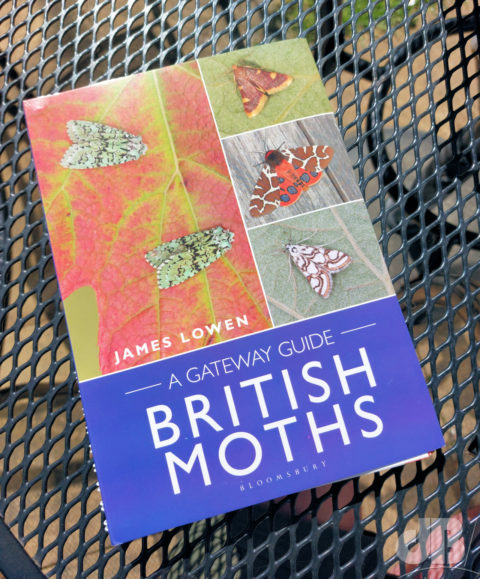Other people’s hobbies are weird, aren’t they? Bird watching, trainspotting, stamp collecting…what’s that all about. But, some are particularly strange, at least until you find yourself introduced, intrigued, interested, and then heavily invested in that particular hobby.
Take mothing, it’s like birding, but with moths. What could be weirder? Many people think of moths as pests, dull grey and brown fluttery things that fly around lights at night and eating clothes and carpets. But, nothing could be farther from the truth. There are indeed some moths that are grey or brown and just two species whose larvae (caterpillars) eat textiles. However, there are about 2500 species in the UK alone and something like 150,000 species around the world and they come in all shapes and sizes, colours and patterns, many that outdo their lepidopteral cousins, the butterflies, for glamour and flamboyance.
Moth-er extraordinaire James Lowen who first went from intrigue to interest to investment when he first set eyes on the magnificent and enormous Poplar Hawk-moth has travelled far and wide to see some of those tens of thousands of species of moth. Now, in “British Moths – A gateway guide“, he reveals some of that intrigue and interest in the hope of enticing his reader into sharing his investment in the world of moths. And, what a world it is from the aforementioned Poplar Hawk-moth to the Angles Shades from the Emperor to Mother Shipton. The names are as diverse and distinctive as the shapes and patterns of this richly diverse group of insects.
In the pages of this handily spiral-bound book, Lowen introduces to what might be our first 350 or so ticks (as it were) on a novice moth-er’s list. Each described in crisp detail with an equally crisp photo. Labels highlight the highlights of each moth’s features, patterns on its wings, their antennae, even the males’ pheromone-releasing tail, its so-called hair pencil.
There is much to learn, but you will learn fast if you take a seasonal tour through Lowen’s lovely introduction to what some of us already see as the most fascinating of hobbies. Many of us see make use of our hobby as citizen scientists reporting sightings to the professionals and the county moth recorders and such.
Be warned though…your trainspotting and stamp-collecting friends will think you’re weird. Let them! Maybe even invest in a copy of Lowen’s book for them, intrigue them, interest them, get them invested in this fascinating hobby. Don’t let moths flutter by without taking a closer look.
